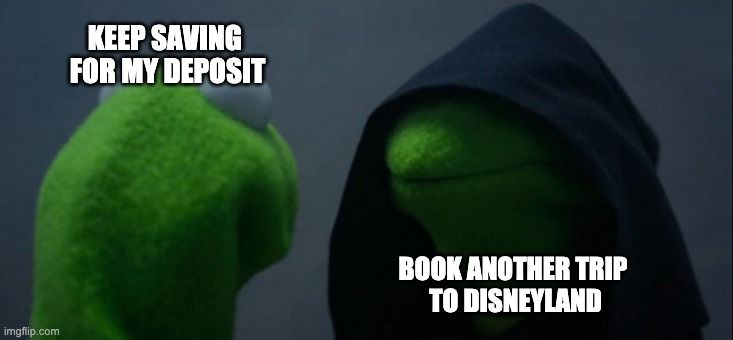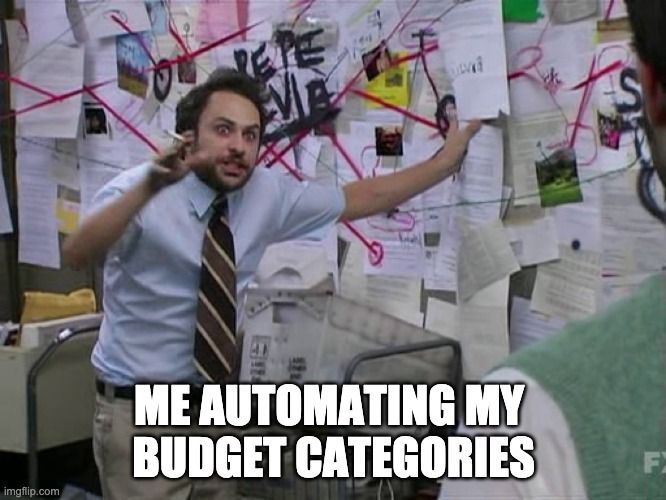How do you set and achieve a really big financial goal? For one of our Spaceship co-workers, it was a mix of budgeting, automation and the First Home Super Saver scheme that helped him realise his dream of owning property in Sydney.
Here’s his story.
I know what you’re probably thinking.
Another story about Australian housing that you can’t relate to at all (unless it’s about how unaffordable it is).
Before you cue that eye roll though, let’s get one thing straight. This isn’t an article about how I found some get-rich-quick scheme on the internet, or how my rich, boomer parents fronted me a huge chunk of cash that gave me a head start on the property ladder.
This is a real life account of how I managed to use some simple financial principles, a few typical working class jobs and a lot of time (!!) to save enough money for a deposit on a Sydney apartment.
My background
At the ripe old age of 33, I wouldn’t classify myself as having had the typical millennial journey through school, university and work.
I have two degrees under my belt, one in science and one in design, both very unrelated to my current line of work in finance. Having spent most of 2006 until 2016 at university in some capacity, I graduated with my second degree when I was 28, which is also when I started my first proper full-time gig. I worked casual or part-time roles all through uni, including a six month stint overseas as a lifeguard at the one and only Walt Disney World.
I also have to admit that I have never had a focused career path, having worked in everything from retail, child care, social work and tech. And, while I did live at home with my mum, I also contributed financially to the household.
Doesn’t really sound like someone who should be able to afford a place right? Well, let me assure you, that did not stop me from aspiring to buy a Sydney property shortly after starting my first full-time job.

Setting goals
I’ve always been a highly organised person. I acknowledge that this doesn’t come easily to everyone but it’s definitely been one of my strengths as long as I can remember. One of the key strategies that helped me keep the focus on my property purchase was goal setting.
Here’s the thing about goals. You need to know what you want. And you need to want it. Like really, really want it (unlike my desire to have abs). Your goal might change over time, which is fine, but you still need to want whatever it is you’re after!
You may have heard of the acronym S.M.A.R.T in the context of goal setting before, but if not, here’s a little rundown. There’s no point setting a super wishy-washy, unachievable goal. Goals need to be super structured and realistic. The acronym stands for Specific, Measurable, Achievable, Realistic, Time-sensitive. Here’s the goal that I originally set myself on my house buying journey:
I want to be able to buy a place of my own in Sydney before I am 30.
If I have a look at this original goal, it’s probably missing a little bit of the detail it needed. But the foundations are there. Specific? Yes. Measurable? Yes. Achievable? Yes – but definitely not in the time frame I had set myself. Realistic? I think so. Time-sensitive? I did give myself a time limit which is part of goal setting but this did get bumped out a number of times! And that’s perfectly okay.
The true goal underlying this goal I wrote down at 28 was that I needed to save the funds required to buy a property. And this is where my organisation and love of budgeting come in.
I love budgeting

I am a stickler for automating things as much as possible when it comes to my finances. Doesn’t matter what bank you’re with or how often you get paid, automating takes out all the guesswork. For my goal of owning my own place, I knew that I needed to save hard. This meant allocating a large portion of my pay to an account dedicated to saving for a house.
Obviously I still needed to live, too, so I made separate accounts for all the things I would need funds for each month. The number of accounts has changed over time to include different or more specific expenses but the principle is the same.
As an example, let’s say I take home $5,000 a month after tax. I would have broken it up by either dollar amounts or by percentages. Here’s an example:
- House savings: 50% or $2,500
- Bills: 20% or $1,000
- Health expenses: 2% or $100
- Emergency fund: 5% or $250
- Treat yourself: 5% or $250
- Spending: 18% or $900
Automation is key
I had set up my bank account to auto-transfer funds into the appropriate accounts the day after I got paid. This meant I didn’t even need to worry about those values unless I got a pay rise and could afford to up the amounts. This method will obviously change depending on how much you can realistically save and your own personal financial situation.
I knew that I could survive off the allowance I had allocated to my spending account for going out etc., with any remainder at the end of the month becoming ‘Treat yourself’ money. I had calculated my bills over the course of a year and divided that by 12 so I could ensure I put enough funds away each month. This is what worked for me. It ensured I didn’t need to dip into other accounts to cover bills or going out or anything else.
I was flexible enough to know that my budget was not going to be perfect at the start and the percentages or amounts I allocated for different expenses were living numbers that changed until they no longer needed to. Once I had a good feel for them though, this method of allocating funds became very strict with no tolerance for dipping into my house savings. That’s how much I wanted to achieve my goal!
Using the First Home Super Saver Scheme
There’s another savings booster I utilised thanks to the Australian government. It’s called the First Home Super Saver Scheme and although it won’t make money appear out of thin air, it’ll definitely help you on your savings journey.
The basics of it are that you are able to contribute up to $15,000 to your super fund each financial year, and you can contribute a total of $30,000 overall. From 1 July 2022 this amount will increase to $50,000. This can either be in a lump sum or salary sacrificed. Either way, these funds will be taxed 15% on entry to your super fund, but this reduces your taxable income for the financial year, which will hopefully mean paying less tax or getting a bigger tax return that will go towards your house.
Any contributed funds can then sit in your super fund until you’re ready to use them and once you are, you just request release from the ATO and they will ensure you get your funds (minus the 15% but plus any interest you have accrued as calculated by them). There’s a lot of things to consider, including concessional contribution caps, so this option may not be right for you. It may be important to get professional financial advice on this, but you can also find lots of information about the scheme here.
My end game
You’re probably wondering what I actually achieved so here’s some real life figures.
I managed to save a little more than $200,000 in cash over the course of seven years using the principles above. None of this was from a lucky break in crypto, or a good investment choice or an inheritance or gift. This was all purely from working and saving aggressively. I still managed to go on holidays overseas. I was still able to buy new clothes. I even managed to pay off my remaining HECS debt with some of this.
And after a year of searching I found an apartment in inner-city Sydney with bonus city views that I was able to purchase with a 15% deposit (thanks to a $1 LMI deal with one of the banks). It’s just a one bedroom place and in all honesty was probably not what I had set out to look for but it’s now my home and I’ve already been able to do some minor renovations to make it my own.
How did my expectations change?
Saving is hard. And slow. So, so slow. But damn is it rewarding when you get there.
Know that saving up for a deposit on a property, especially if you’re aiming for a 20% deposit, plus all the other costs such as stamp duty, conveyancer fees, transfer fees, etc. takes a bloody long time. This is not a goal with a time frame of tomorrow. You need to think long term here. We are talking likely five+ years if you’re saving on your own, if not more. This is why you really need to want it! And also why the whole automation of budgeting helps so much.
Often you’ll have to give up things here and there, such as that annual holiday you might have taken, or that lunch you buy yourself every day, just to ensure you are putting enough away. But it’s not forever. You also need to know that if you are looking at buying a place, there is no such thing as the perfect house and even if there was, it is potentially out of reach financially. It’s okay to settle on something that you are able to make your own.
In retrospect, it was a long journey, much longer than I had initially expected. I was ready to throw in the towel on many occasions and give up on the dream altogether. There were some things I missed out on but the lessons I have learned have helped me grow and also allowed me to assist my family and friends in similar journeys. Perseverance is key but there is nothing greater than being able to celebrate the achievement of a life-changing goal.



